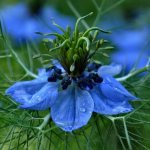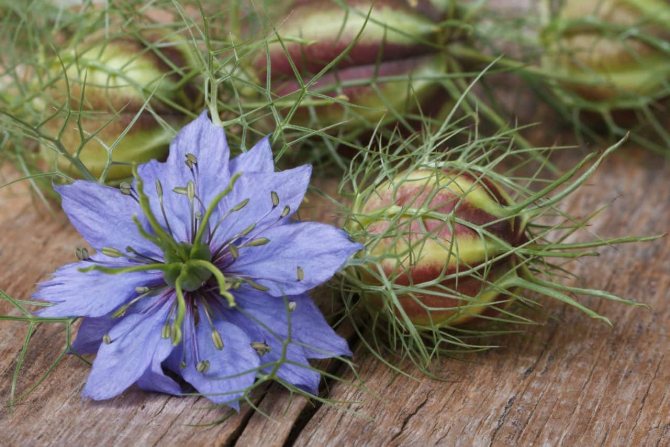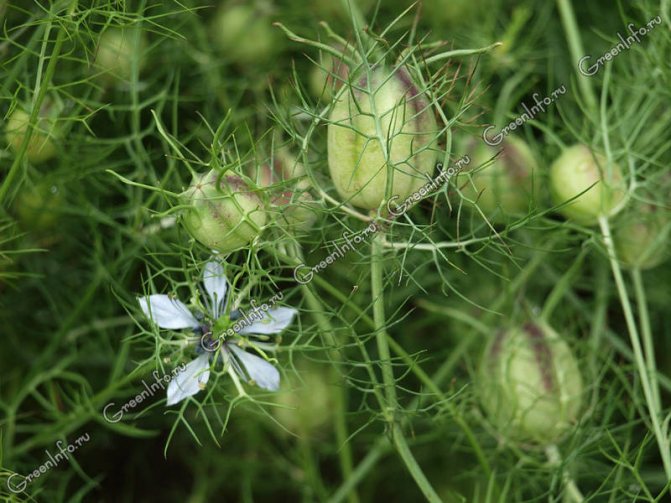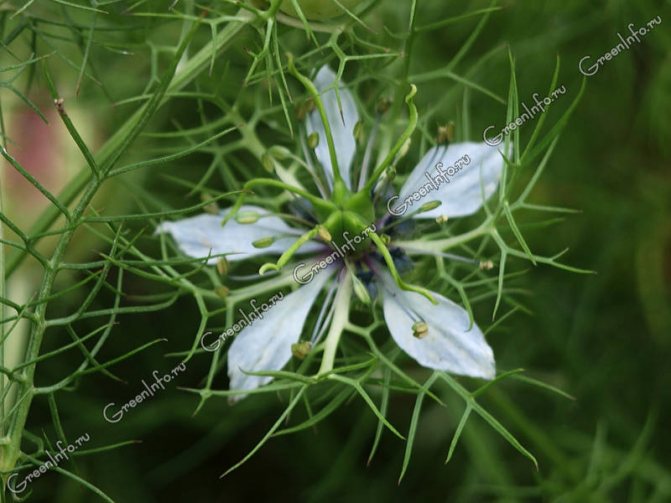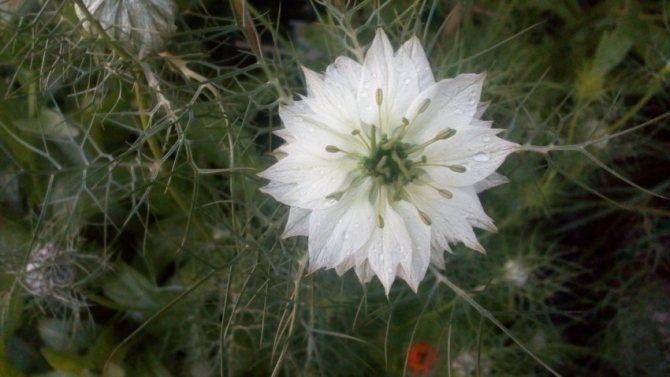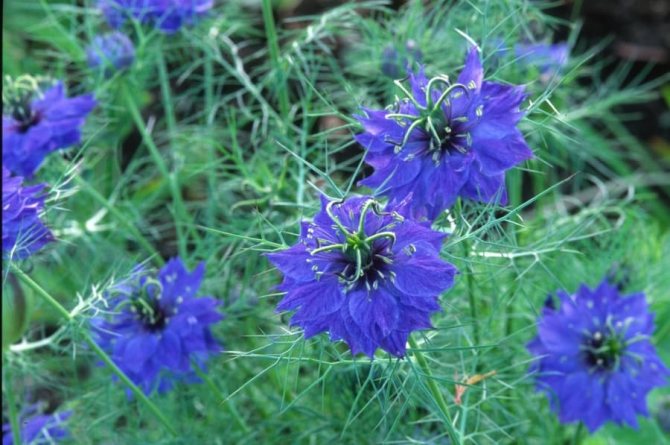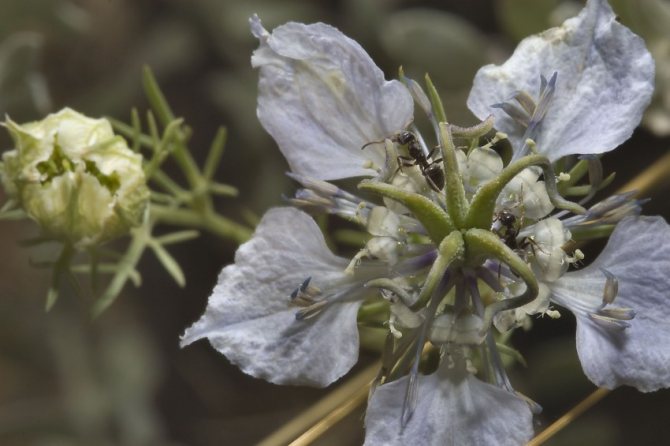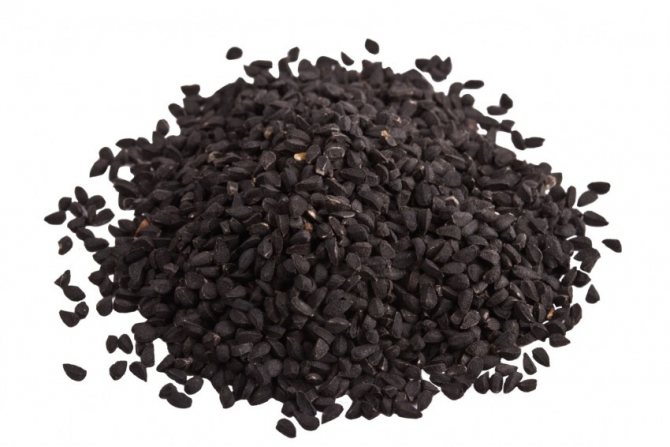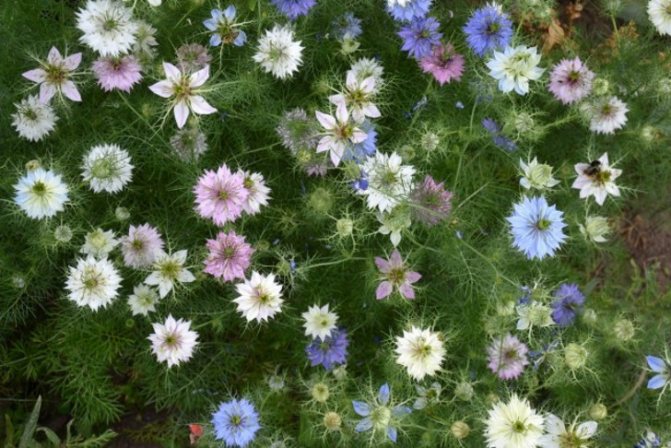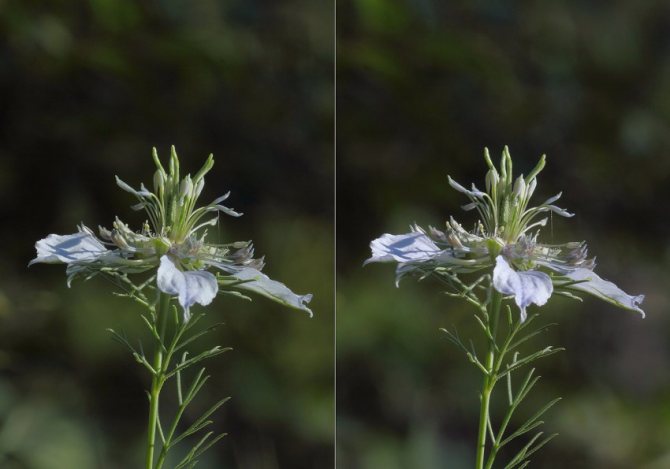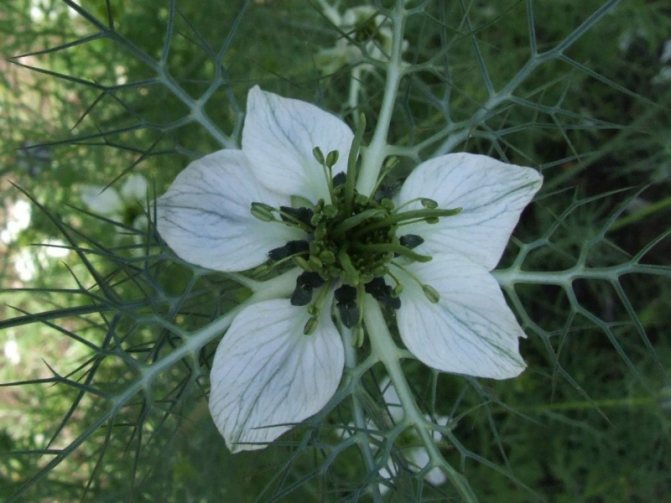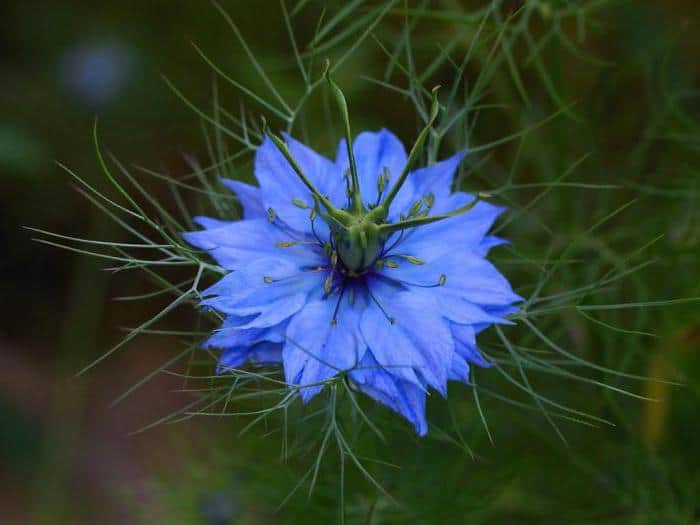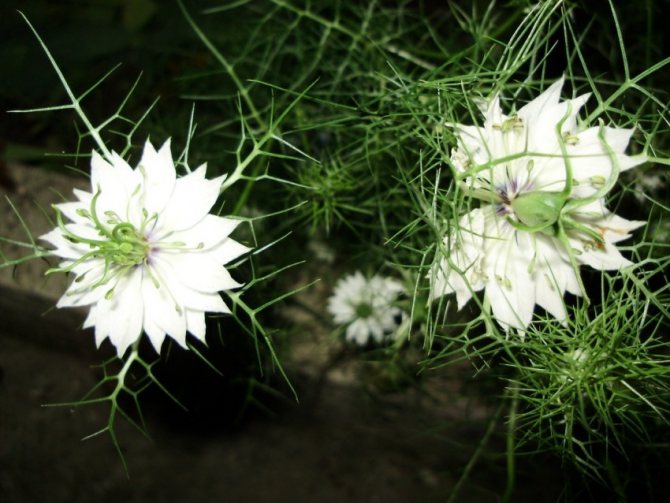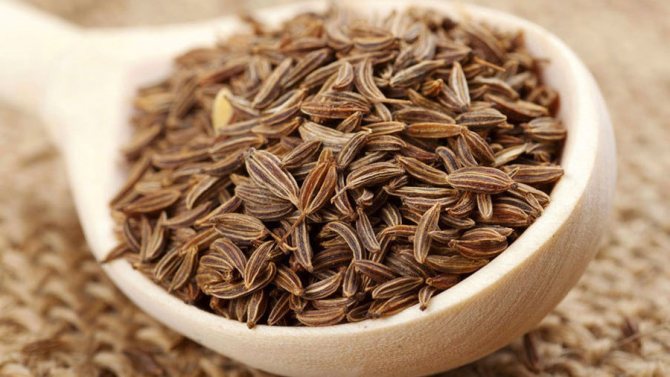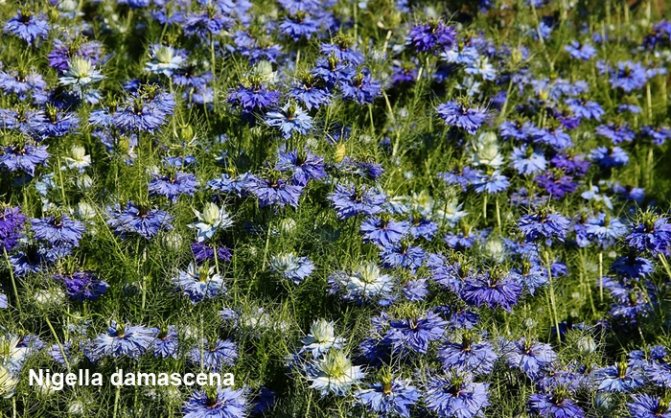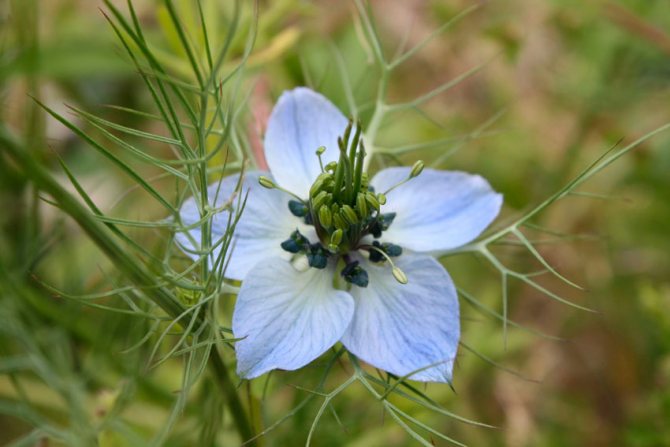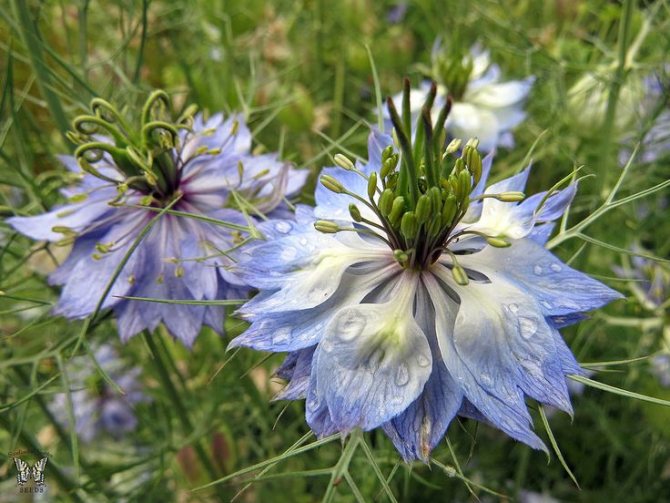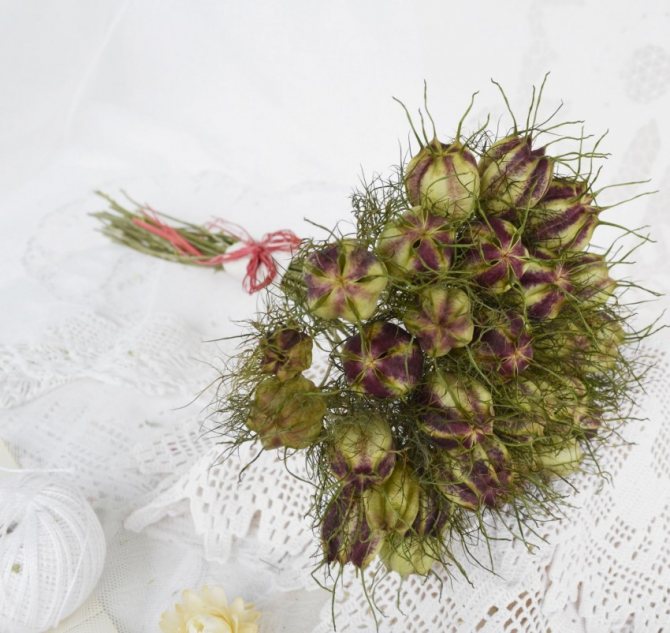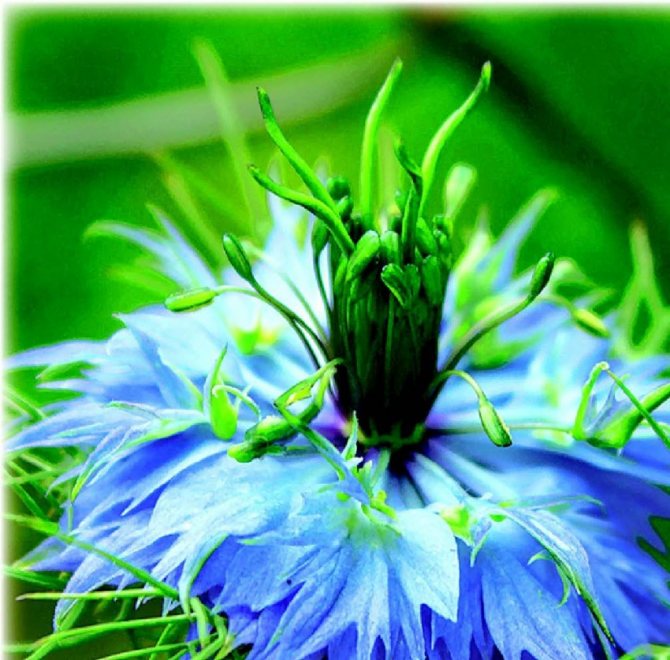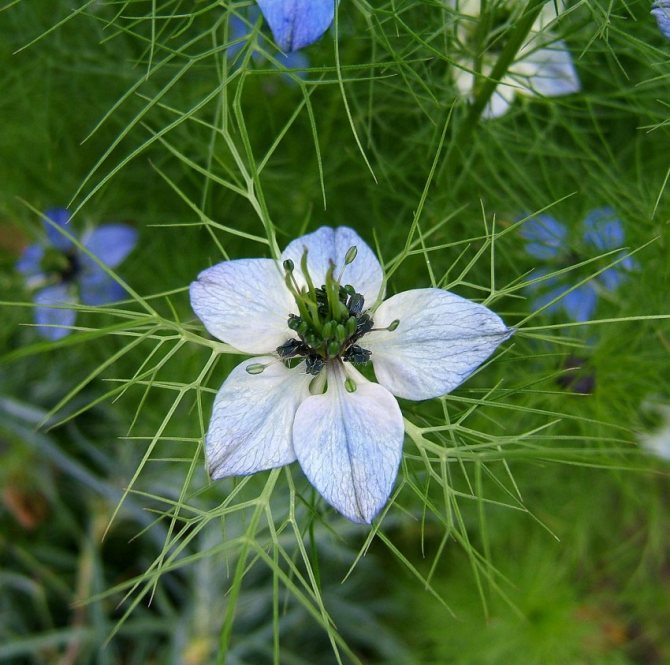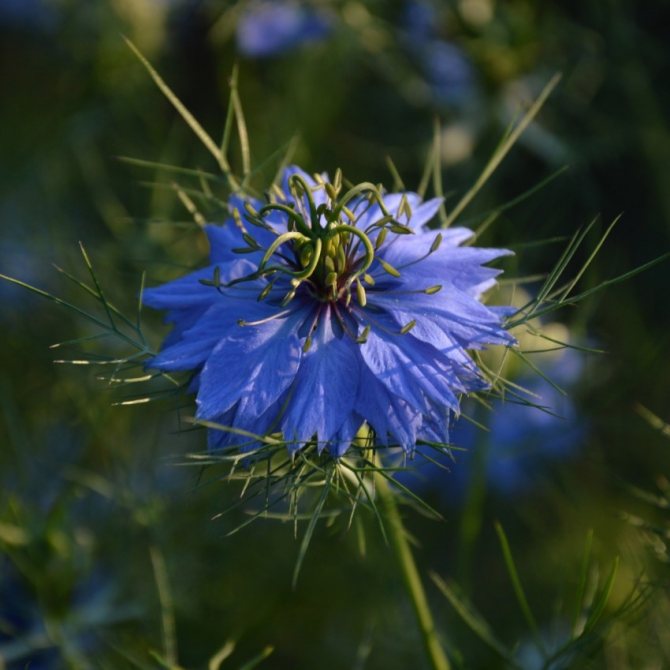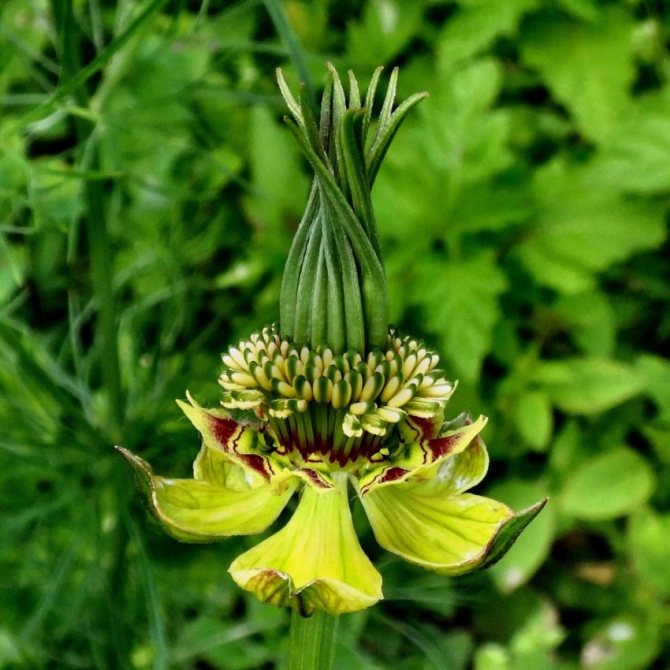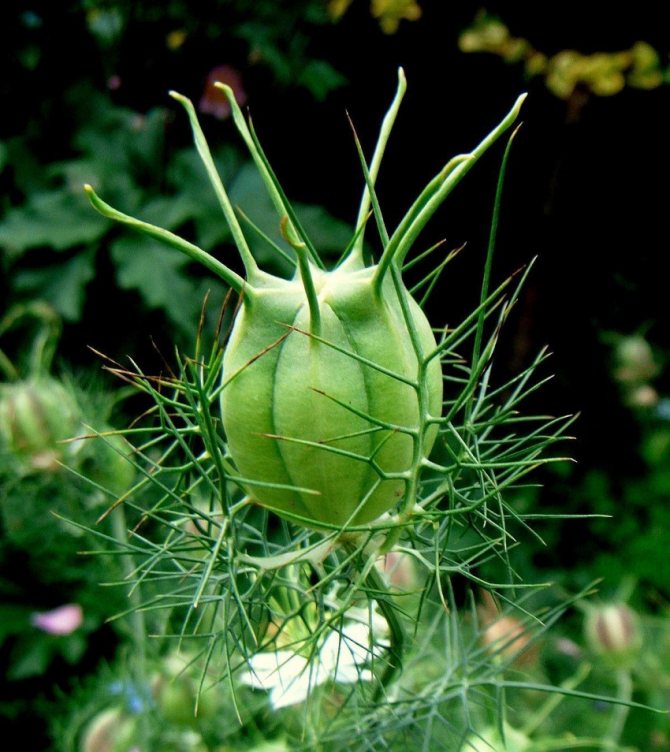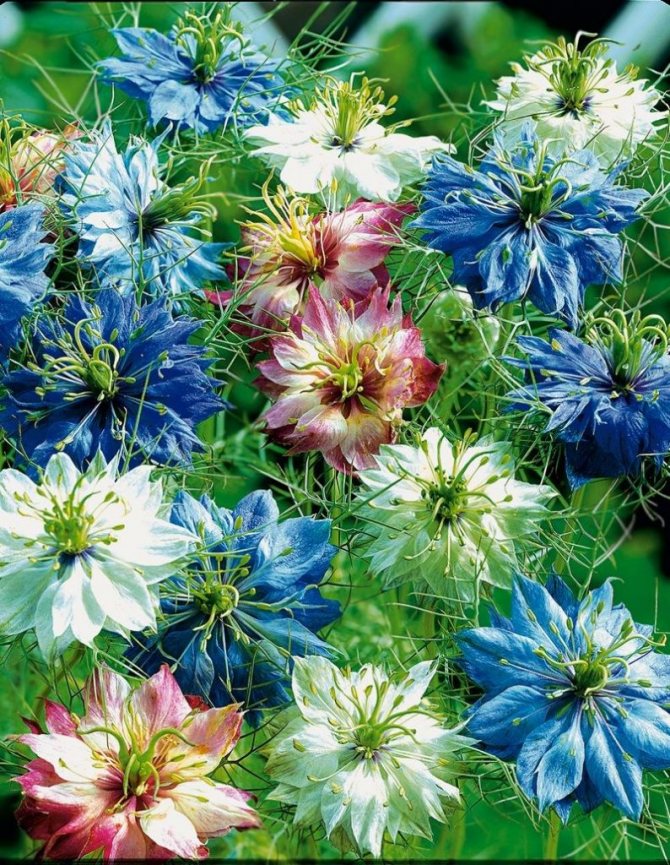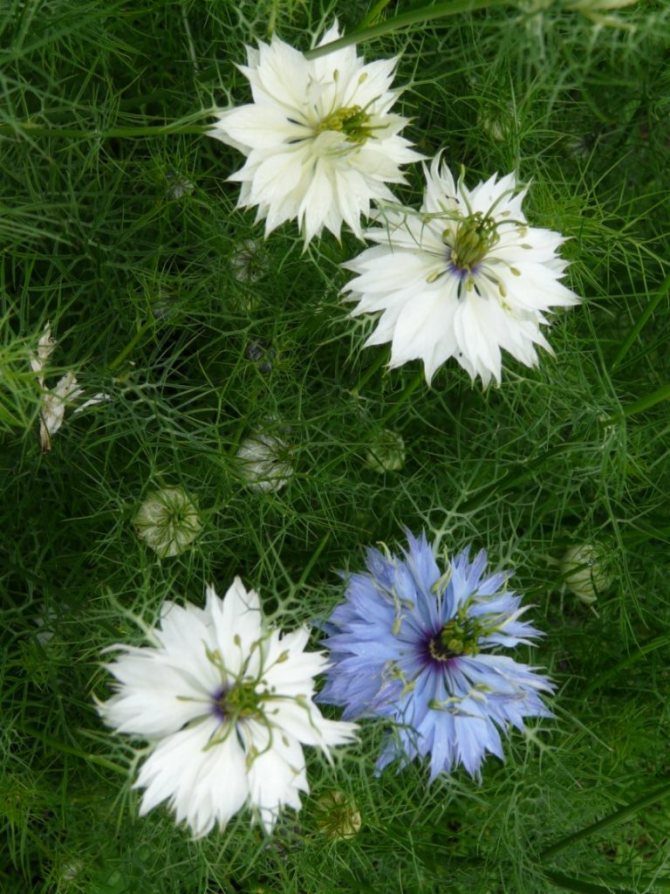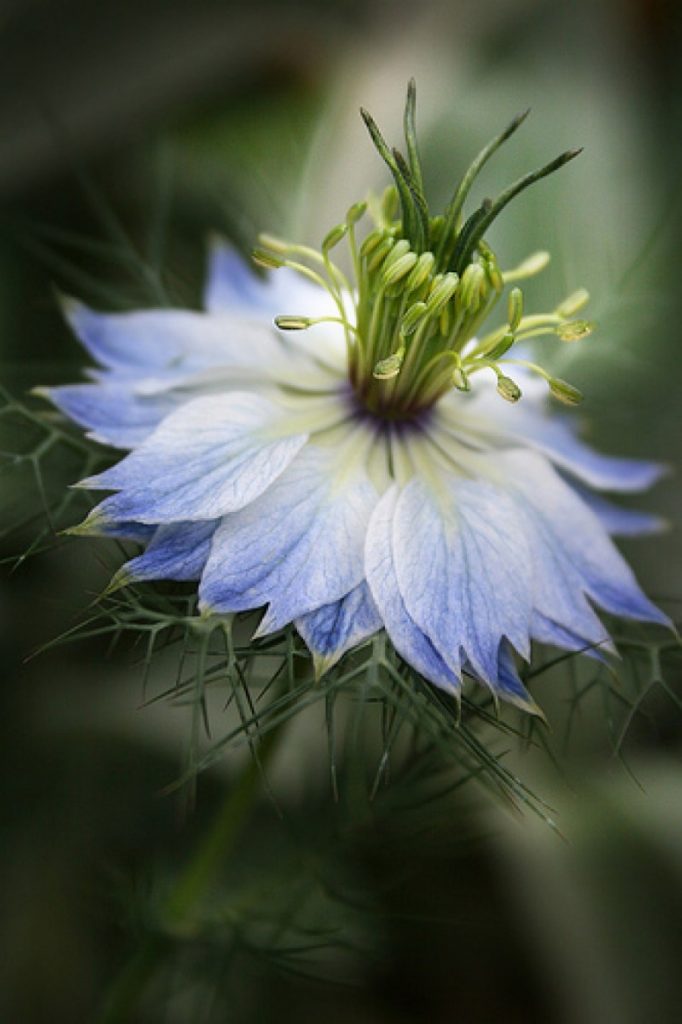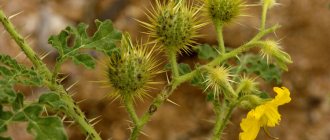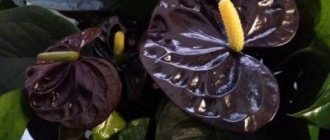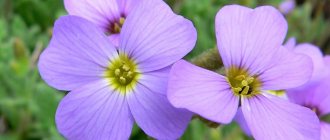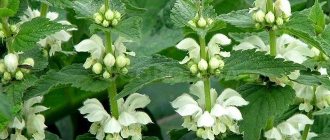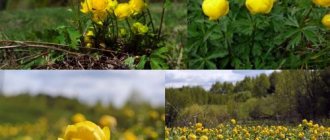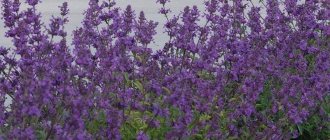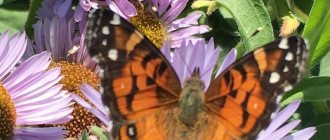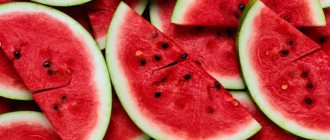The herb Nigella, also called nigella, is directly related to the buttercup family. This genus unites more than 20 species of various plants. In natural conditions, they can be found in Western Asia, Western Europe and North Africa. The Latin name comes from the word "niger" which translates as "black". And the plant got this name due to the fact that its seeds are painted in a coal-black color. First, Nigella ended up in the North Caucasus and Turkey, and from there she found herself in India, and from there to European countries. In England, this plant is called blessed seeds, black cumin, nutmeg, kalindzhi, flowering fennel, black sesame, and Italian coriander, but Nigella has nothing to do with any of the mentioned plants.
Short description
Nigella Damascus, or Chernushka Damascus, refers to annual plants from the genus Chernushka. The flower has a straight stem without pubescence, reaching 40-60 centimeters in length.
A distinctive feature is its green-purple color. Nigella Damascus leaves are pinnately dissected. The flowers of the plant are often single, but complex inflorescences are also found, which are formed due to lateral shoots.
They bloom in May and bloom until August, and the color of the petals can be light blue or blue. Nigella flowers are large - up to 4 centimeters in diameter.
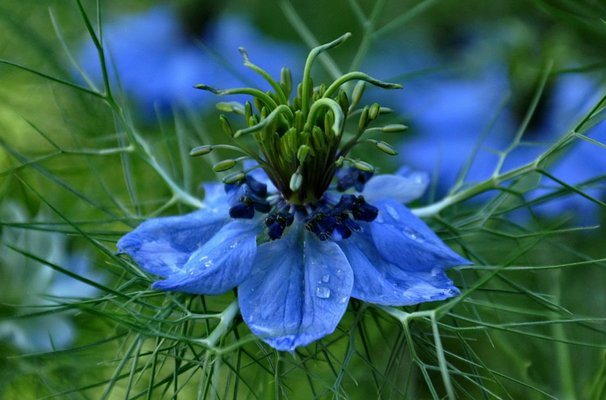
The fruits of the plant are multileaf, ripening in August. Nigella Damascus seeds are similar in appearance to onions, but their taste is spicy, and the smell resembles strawberries.
Nigella Damascus grows in warm, arid climates (North Africa, Levant, Transcaucasia and South Europe). The homeland of the plant is the Middle East.
Did you know? Seeds of any type of nigella can be used to store clothes. Their smell scares off moths.
Features of nigella
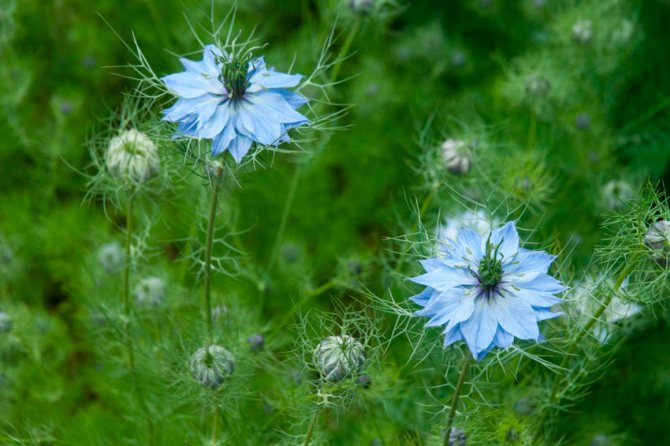

Nigella is an annual herb with branched shoots and reaching a height of 0.3–0.6 m. Alternate lacy leaf plates can be finger or pinnately dissected. The upper leaves rise above the plant, resembling an openwork veil. The diameter of single bisexual flowers is about 4 centimeters, they have 5 sepals, which outwardly resemble petals. The color of the flowers can be white, blue or yellow. If the flowers are double, then their sepals are placed in 2, 3 or 4 rows. The flower petals have been transformed into nectaries. The fruit is a bloated or flattened box, which consists of 5 leaflets. Inside the fruit are ovoid matte black seeds.
Nigella is considered an essential element of landscape design. Such plants are planted along curbs and hedges, rockeries, flower beds and alpine hills are decorated with them, and nigella is also used as an element of floral arrangements.
Seat selection
Nigella Damascus prefers open, sunny places. In partial shade or shade, the flower develops poorly. Nigella grows on light, loose soil. It must be nutritious so that the plant can easily endure dry weather.
Acidity affects the flower badly, so it is better to choose a neutral soil. Also consider the permeability of the soil.Nigella does not tolerate excess moisture well. It is undesirable to plant an annual in windy areas, since the flowers are quite fragile.
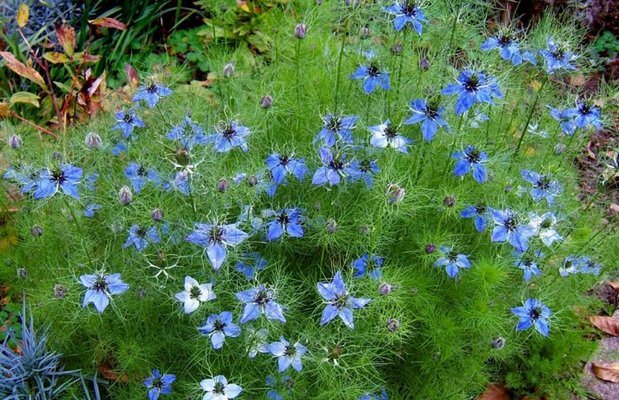

Nigella Damascus Care
It is important not to overdo it with watering, since the plant reacts poorly to both excessive dryness and excessive moisture and dampness. The irrigation schedule must be strictly monitored.
You should not rush with fertilizers and top dressing either. This flower can grow in an already fed area before it. Only when the buds and the first flowers appear, it is advisable to add potassium and phosphorus, which support the lush flowering of the nigella.
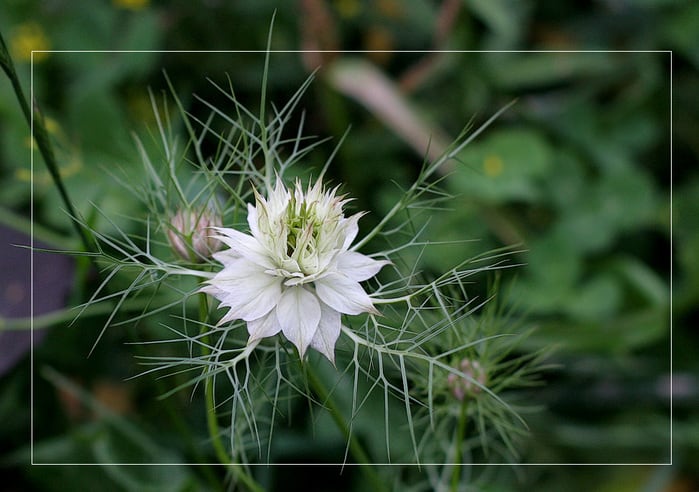

Sowing seeds for seedlings
Nigella damaska reproduces only by seeds. So that flowering does not start late, and half of the flowers do not die during unexpected frosts, it is recommended to plant seedlings.
Timing
Sowing seeds for seedlings begins at the end of March, when the weather is warm. In some regions, the process begins in the first half of April.
Seeds are sown for seedlings only in spring. In autumn, flowers cannot be planted in open ground. And in greenhouses, nigella can bloom poorly due to high humidity.
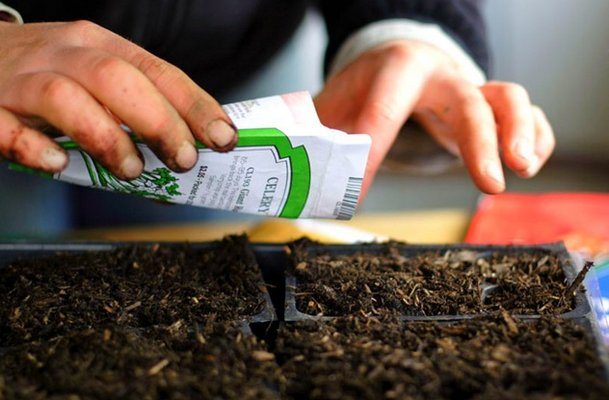

Conditions and care
Nigella is planted in a greenhouse. The depth of the grooves is 2-3 cm. The flower is fast-growing, so the first shoots may appear in 10 days. In this case, the greenhouse is opened and the soil is watered with a small amount of water.
This must be done carefully so that in the future the Nigella Damascus does not get lost. Pay attention to the temperature regime, it should not be lower than + 22 ° С.
Florists also recommend planting seeds in peat tablets. They will reduce the amount of work involved in replanting seedlings. In addition, when transplanting an annual, the fragile root system will not be injured.
The undoubted plus will be the fact that the pots will begin to decompose, providing the soil with peat.
Description of nigella
Nigella is a low (30-60 cm) plant with straight, branched stems, gray-green leaves, very similar to dill leaves only located a little denser, and rather large, single, simple or double flowers of blue, blue, white, less often red color.
Mass flowering of nigella begins in July. Each flower blooms for about a week, and the flowering itself lasts 1-1.5 months.
The fruit is five-leafed with black seeds resembling onion seeds. Non-flowering nigella is also decorative. Its delicate lush greenery with bright seed pods is ideal for the formation of winter bouquets.
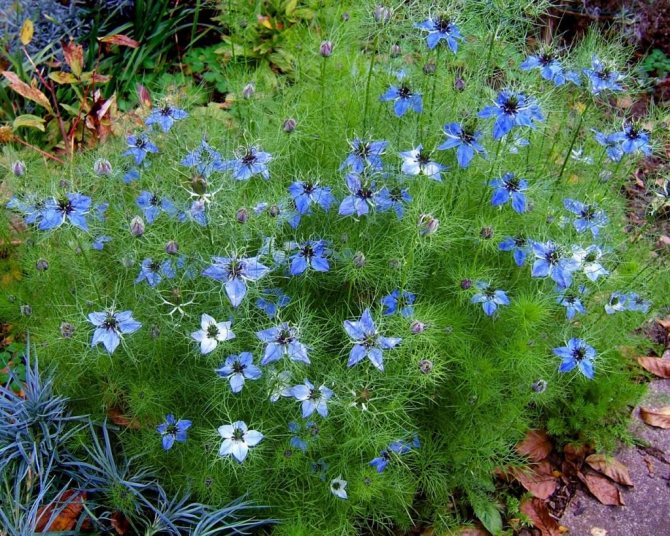

Nigella, or Nigella (Nigella). <>
Transplanting seedlings to the site
The advantage of seedlings is the ability to adjust the planting density. But don't forget that after transplanting into open ground, Nigella Damascus will bloom only after 40-45 days.
Timing
Transplanting seedlings to the site begins in early May or when the seedlings have reached 7-10 cm in length. It is at this time that the seedlings will have several leaves on the stem, and the roots will strengthen.
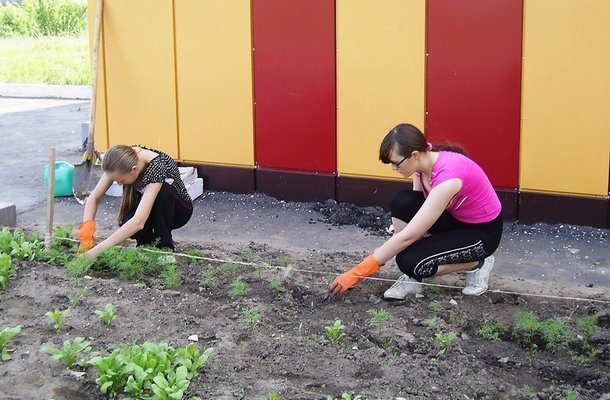

Landing is carried out in sunny and calm weather. There should be no rain a week before planting, otherwise the soil will not have time to dry out completely, and the acidity level will be too high for the plant.
Scheme
Each seedling is dug out of the greenhouse and transplanted with an earth ball. The pits for planting should be small, you can focus on the size of the earth coma with the plant.
It is recommended to add a small amount of mineral fertilizers to the pit if your soil is not rich in nutrients. After sprinkling earth on the hole with the planted flower, pour it with a little water.
If you plant seedlings in peat pots, then the hole is dug in accordance with the height of the container.
For any type of transplanting of seedlings, keep an interval between rows of 40-45 cm.The distance between seedlings is no more than 20 cm.
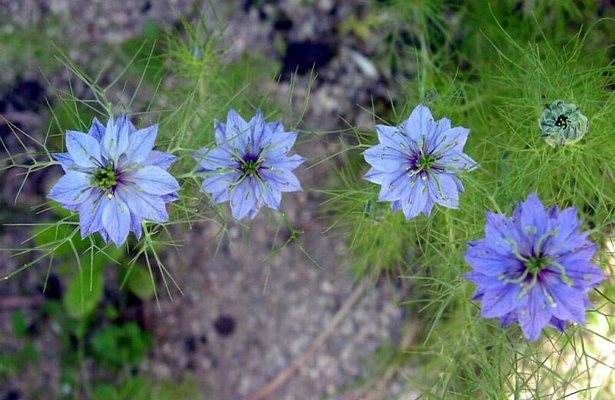

Main characteristics
Black cumin or nigella flowers are excellent honey plants with a highly branched stem of a lilac hue and small openwork leaves of a bright green color, similar to dill.
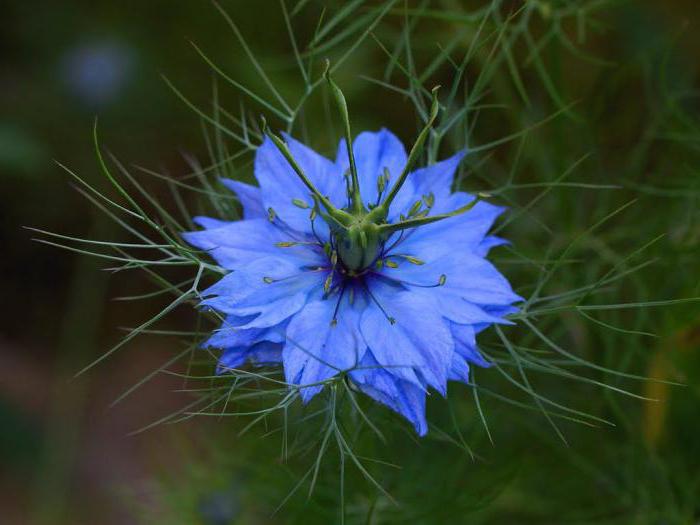

Distinguish between blue, white, red and blue flowers, which are formed from five identical sepals. Terry are also found, their inflorescence consists of several layers of sepals. The plant reaches a height of 60–90 cm, and also grows in breadth, thanks to which you can create beautiful forms of shrubs by pruning. The plant blooms for about two months. Nigella fruits resemble a swollen or flattened capsule, which contains a huge amount of black seeds with a pleasant aroma and spicy taste.
Sowing seeds straight into open ground
Nigella damascus can be grown outdoors, and planting seeds and caring for seedlings will take less time than preparing seedlings. Florists recommend sowing nigella in open ground, since seedlings do not always take root.
Important! Nigella damascus will not grow next to ground cover plants.
Timing
Since nigella can only be grown from seeds, you need to know how and when you can plant seeds in open ground. Nigella Damascus is sown in spring or autumn.
In the spring, this process takes place in March or April, in the fall - before the first frost, so that the seeds have time to take root in the ground. If you decide to plant a flower before winter, then in early spring cover the first shoots with a film so that the nigella does not freeze.
It is important to plant nigella in warm and dry weather and know for sure that at least the next week the temperature will not drop. It is necessary to sow flower seeds in spring no later than May, since the first shoots may appear late (this is influenced by climatic conditions). In autumn, it is necessary to take into account the rains, which should not also be in the first week after planting. Otherwise, the earth will oxidize and the annual will not take root.
Scheme
There are 1 gram of seeds per square meter. It is important to thoroughly loosen the soil before planting. Seeds are sown evenly to a depth of 2-3 cm. Sowing should not be too dense, since Nigella Damascus grows strongly.
After the end of the process, compact the soil and sprinkle with a little water. Maintain a distance of 40-45 cm between rows.
Nigella after flowering
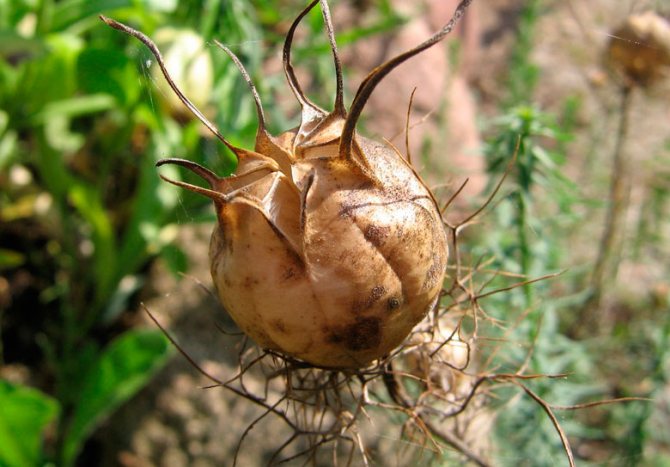

The signal for the beginning of the collection of nigella seeds is the ripening of about 2/3 of the capsules, this time, as a rule, falls on the last days of August or September. Mature boxes are cut along with the shoots, and then tied into bunches, which are laid out in a dry ventilated room to dry. When the capsules are dry, shake out the seeds from them, which remain viable for 2 years. These seeds can be sown immediately after harvesting before winter, or do it in the spring.
Application in landscape design
Nigella Damascus, unlike other species, is mainly used as an ornamental plant. Therefore, it is often grown to decorate bouquets, as well as flower beds. The annual looks good on alpine slides, rockeries and dry gardens.
It is possible to combine several other decorative types of nigella due to the different colors of the petals. For example, whole-leaved nigella is harmoniously combined in a flowerbed with damask nigella due to its pink inflorescences.
It can be planted along fences or hedges, as well as paired with wildflowers. Single landing is not recommended.
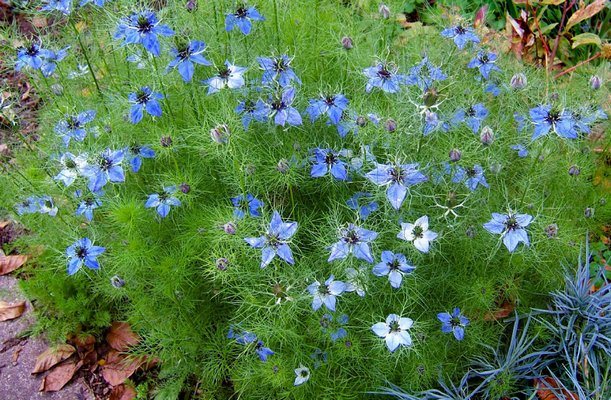

Did you know? The Swiss call Nigella Damascus "spider flower", emphasizing the resemblance to an insect.
Types and varieties of nigella with photos and names
Nigella damasceana
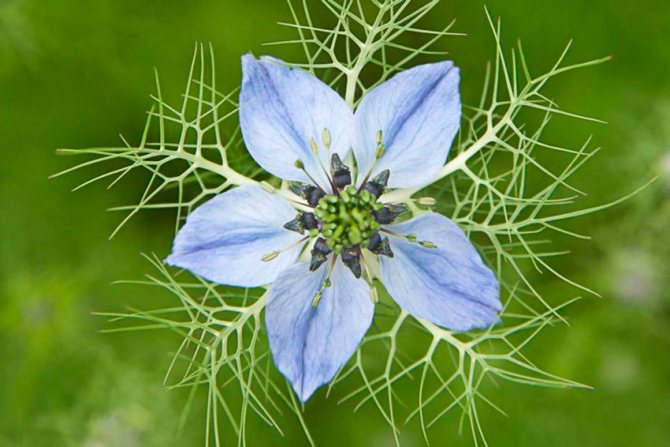

Among gardeners of middle latitudes, this species, also called "the lady in the green", is most popular. The fact is that such a plant has beautiful not only flowers, but also leaf plates.In natural conditions, such flowers can be found in Asia Minor and Asia Minor, in the Crimea, in the Caucasus and in the Mediterranean. The height of branchy shoots can be up to 0.3–0.5 meters. The leaf plates are three times or twice pinnately dissected. The color of double or simple flowers can be blue, white or blue. The flowers seem to be surrounded by a spectacular "blanket" consisting of openwork leaves located on the shoots directly under the flowers. There are a large number of varieties of this type of nigella, but it should be remembered that not all of them are highly decorative. For example, the Baby Blue variety is more like a green lump, reaching a height of 15 centimeters and having tiny flowers and ugly horned fruits. The most decorative varieties include:


- Cambridge Blue... Delicate stems can reach 0.9 m in height, the color of semi-double flowers is blue.
- Miss Jekyll Rose... Very straight stems reach a height of half a meter. The color of the flowers is dark pink-red. This variety was created specifically for florists who use it to compose dry or fresh flower arrangements.
- Persian Jewels... This variety includes plants with blue, lilac-pink, white or pink flowers.
- Dwarf Moody Blue... The height of such a dwarf plant can reach 15–20 centimeters. The color of the flowers is blue.
Sowing nigella (Nigella sativa)


This species is cultivated as a medicinal plant. The height of such an annual plant can vary from 0.3 to 0.7 meters. White, blue or yellow-green flowers can be double or simple, they look very impressive against the background of finely dissected lacy leaf plates, outwardly similar to fennel foliage. The black seeds of this type of nigella have a very strong spicy smell, which is why they have been used for many hundreds of years as a seasoning for various dishes. Choleretic and gastric remedies are also prepared from such seeds. This species includes such names as: black cumin, black sesame and flowering fennel. And in the Quran it is written about him: "In the black cumin heals from all diseases."
Spanish Nigella (Nigella hispanica)
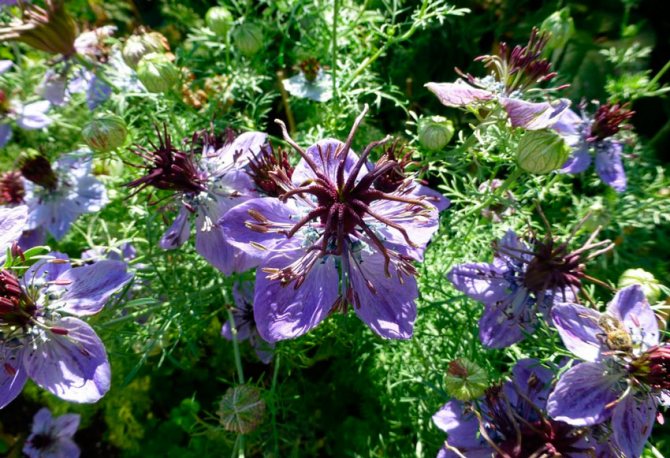

This species is not so well known. The homeland of such an annual is the north of Africa and the south of Spain. The bush can reach a height of 0.6 meters. Deeply divided leaf plates are colored dark green. The diameter of the dark blue flowers is about 6 centimeters, they have a mild odor and brightly colored stamens. Light red ovaries of this type are also quite spectacular. Flowering is observed in June – September.
Nigella orientalis
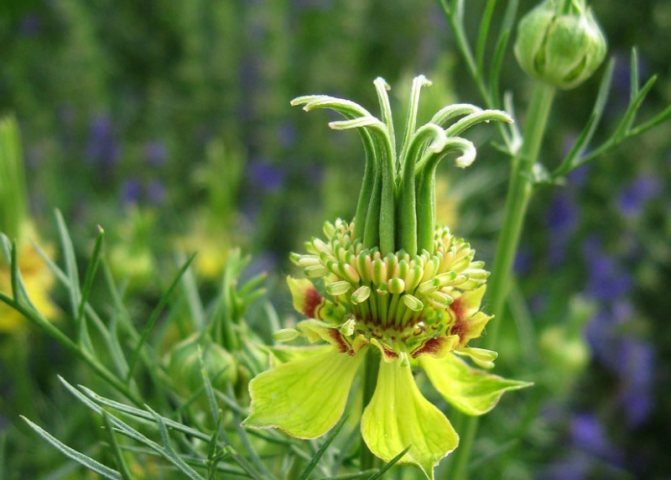

This type is not very popular. They decorate flower beds, and also such flowers are grown for cutting and for drawing up dry bouquets. This annual plant has small flowers and spectacular seedlings.
Care Tips
Nigella Damascus is not a whimsical plant, therefore it does not require careful maintenance. It all depends on the correctly chosen planting site and the nutritional value of the soil on which the flower grows.
Watering, weeding and loosening
The annual blooms well in high summer temperatures. At the same time, abundant watering is needed every two weeks. But additional watering is possible when the soil dries up.
Loosening of the soil is not recommended, since the root system is not deep. Weeding depends on the frequency of occurrence of weeds, if, of course, they occur at all. But for the normal development of an annual, it is enough to weed the land before planting. Do it manually.
Top dressing
Fertilizers play a particularly important role in the care of Nigella. Too high content of various nutrients in the soil can lead to the death of the flower, and the lack will affect the timing of flowering and the quality of seeds.
The introduction of potassium-phosphorus fertilizer is recommended when the first inflorescences begin to bloom.
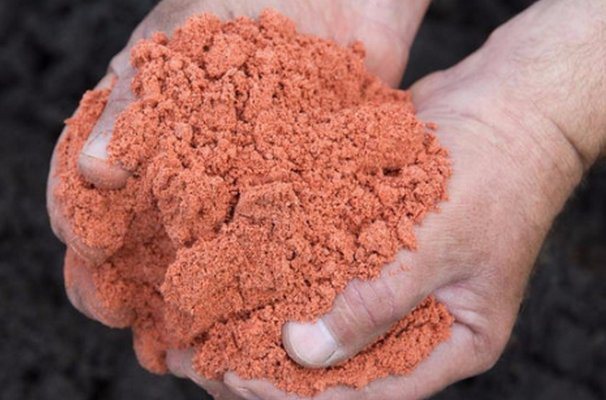

Diseases.
Due to the fact that nigella has a strong, spicy aroma, it is practically protected from pests. In rare cases, the flower is attacked by a few spider mites, which are destroyed by spraying with insecticides.
The flower is sick only in rainy periods. The most common problem is powdery mildew, which can be dealt with by spraying with a fungicide solution. The procedure should be repeated a week later as a preventive measure.
Nigella Damascus is a beautiful plant that is also used in cooking and folk medicine. Observing the basic requirements for growing and caring, you can observe its beauty for a long time.
Diseases and pests: how to fight
Nigella damascus is considered to be resistant to diseases and pests. However, powdery mildew can be affected by frequent rain or over-watering. Spraying with fungicides will help to combat it.
If you do not want to use chemicals, then use biological products that can be used to water the soil.
One of the many pests that affect nigella is the spider mite. To eliminate it, use insecticides (Fitoverm, Aktara, Vertimek, Neoron, Akarin). But the flower scares off other pests with its spicy smell.
Application and useful properties of nigella
In medicine, the seeds and leaves of the plant are used. Young leaves contain many useful substances, so they are added to fresh salads. The seeds have a nutmeg aroma and peppery flavor. These properties are mainly used in oriental cuisine.
In Turkey, baked goods are sprinkled with nigella instead of the poppy we know. Seeds are widely used in Indian cuisine as a condiment. They give salads, fish, meat dishes a special piquant taste. Nigella flavored ice cream, tea, jelly, and also used for home canning. The seeds are stored in a dry, dark place in tightly closed porcelain or glass containers.
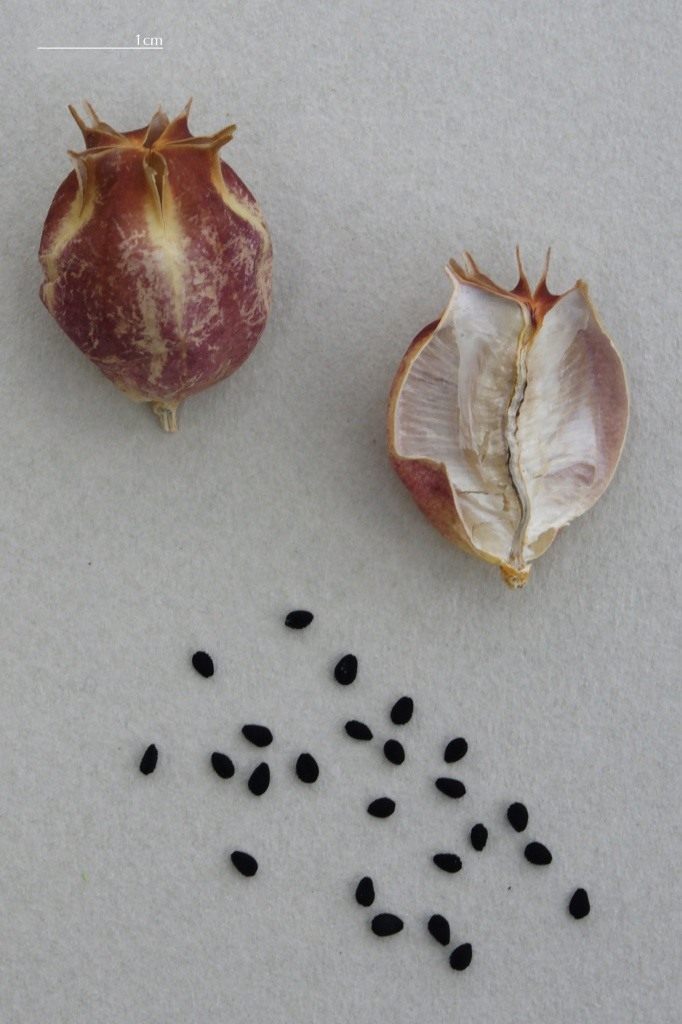

Seeds of Nigella. <>
In eastern countries, nigella is called "the blessed seed" and they are sure that it will cure any disease, except, of course, death. Currently, this flower is considered an effective elixir for numerous diseases of the gastrointestinal tract and liver.
In addition, nigella is a very popular decorative flowering garden plant, which is often used to decorate borders, flower beds, rabatok, and Moorish lawns. The flower looks especially advantageous among flowering perennials and annuals (poppy, flax, cornflowers). Florists use the plant to cut and create exquisite dry bouquets.
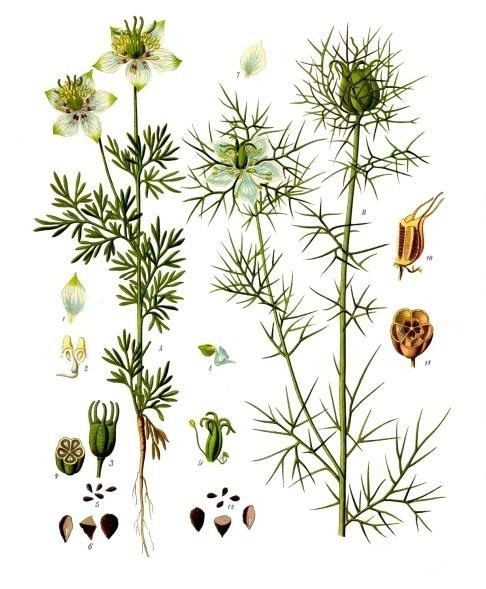

Chernushka sowing and Chernushka damask. Botanical illustration from the book 'Köhler's Medizinal-Pflanzen', 1887
History
If you did not have to meet in person, or see a photo of a nigella flower, then it is unlikely that you will be able to recognize it right away. The plant, also known as nigella, is a member of the buttercup family, which includes over twenty other species.
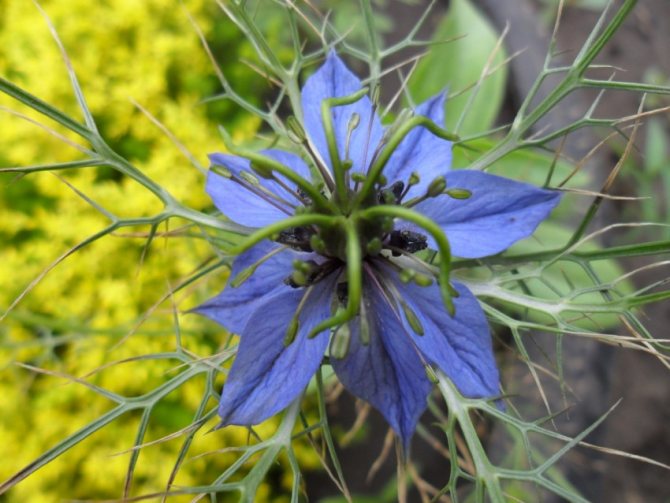

In the wild, nigella can be found in western parts of Europe and Asia, to which can be added the northern part of the African continent.
The plant got its name from the Latin word niger, which means black. This is because the seeds of nigella are colored dark black.
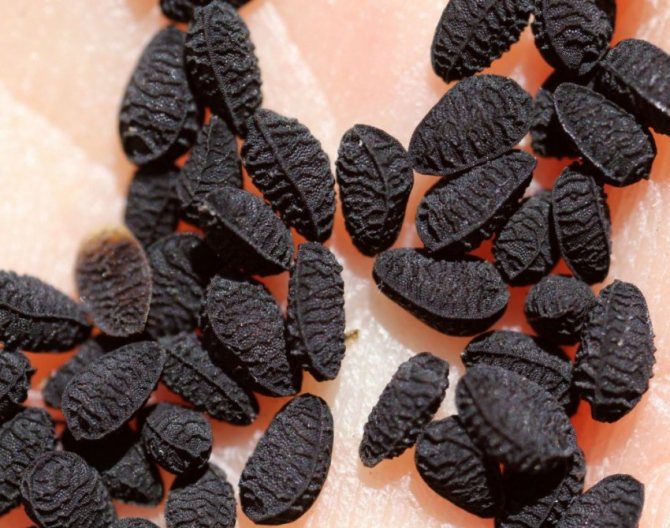

The homeland of black cumin is Turkey and the North Caucasus. After the plant was discovered by people, it began to fall into other regions, as a result of which it became entrenched in the countries of Western Europe, India and North Africa.
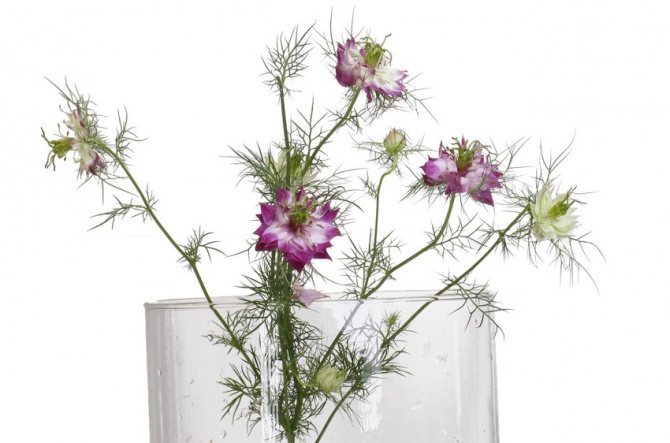

In Foggy Albion, Nigella received several more names, among which I would like to highlight - blessed seeds, kalindzhi, nutmeg, blooming fennel and even black sesame. The most interesting thing is that Nigella has nothing to do with all the plants with which her numerous names are associated.
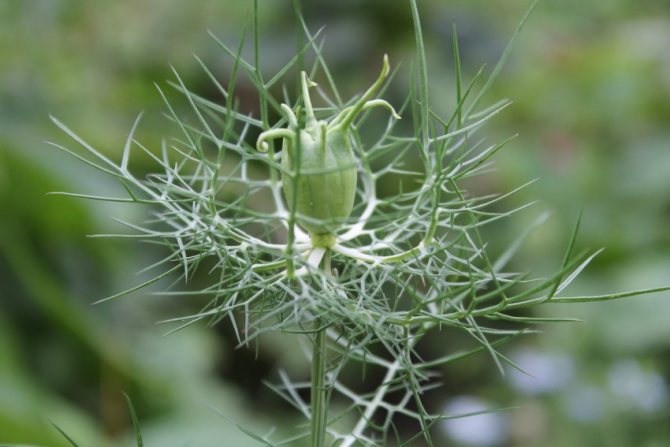

Watering
Nigella flowers (Albina variety and other varieties) have become quite popular due to the simplicity and speed of plant care. The main rule that should be adhered to is balance in everything.


For example, excess moisture and nutrients negatively affect the well-being of the plant. Abundant watering can cause the development of diseases. Water the plant regularly, in moderation, and avoid drought. At the same time, due to a lack of fertilizers and moisture, the plant blooms poorly and loses its attractiveness, and over time it can dry out.
Preparation of planting material and sowing site
When choosing a place for sowing or planting nigella, the choice should be stopped in sunny places with a predominantly loose area of land. The soil is necessary nutritious. Increased acidity has a detrimental effect on the rooting of the seedling, as well as on its further development.
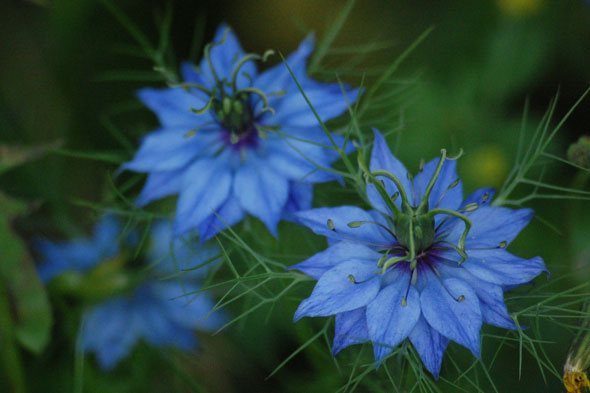

Soil preparation consists in thorough digging, applying mineral fertilizers, and getting rid of all weeds growing on the territory of the selected area.
Growing legumes will become good neighbors. Nigella reacts negatively to creeping ground cover crops.
Protection from pests and diseases
With prolonged rains and increased dampness, the plant can get sick with powdery mildew. It gradually leads to the death of Nigella. To save it, it is necessary to carry out the fungicide treatment in a timely manner, remove all damaged parts.
With prolonged drought, spider mites may appear on flowers. They feed on the sap of the plant and eventually cause its death.
Insecticides are used to control pests:
- Fitoverm;
- Aktara;
- Akarin;
- Actellik;
- Decis and others.
Thanks to the spicy smell, nigella is able to repel many pests.
Contraindication to use
Despite the huge number of positive qualities, the plant has its own contraindications for use. It is advisable to take them into account. There are several points when Nigella cannot be used:
- pregnancy, especially in the last months;
- thrombophlebitis;
- cholelithiasis;
- cardiac pathology;
- gastritis with an increased level of acidity.
Any means that contain nigella are not permissible for people with transplanted organs. This is due to the fact that the seeds increase immunity, and this can lead to the rejection of the transplanted organ or other implant.
It is quite simple to grow such beauty on your site. The main thing is to follow some advice from experienced craftsmen.
Growing nigella from seed
Sowing nigella
Nigella reproduces only by seeds. They can be sown directly into the ground in May or before winter to a depth of about 2 cm. The seedlings of the plant are cold-resistant, but it is better to cover the crops for the first time. Seedlings do not tolerate transplanting very well, so they need to be sown immediately to a permanent place.
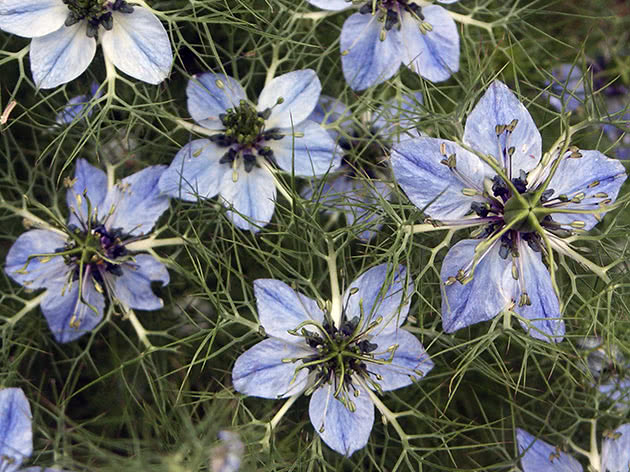

Seedling nigella
Nigella seeds are sown for seedlings in March-April in a greenhouse to a depth of 2 cm. Seedlings usually appear by the end of the second or third week. They dive in the phase of development of a pair of real leaves into peat-humus pots, in order to transplant seedlings directly into them on a flower bed when the time comes.
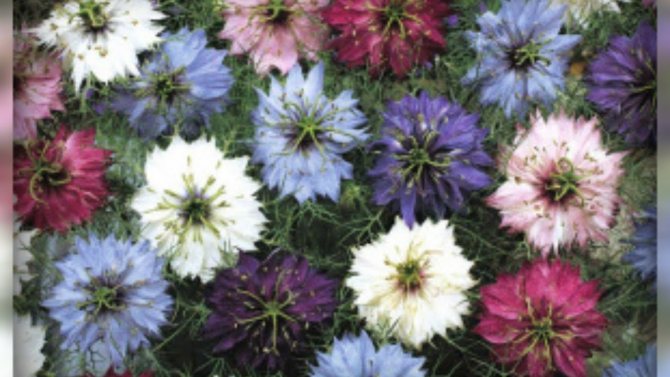

The use of nigella in medicine
The healing properties of the oil made from the seeds of the plant are used to treat skin diseases, as an adjuvant, prescribed in the treatment of cancer and diabetes mellitus. The oil is a natural biostimulant, and the absence of side effects increases its value. A decoction of seeds has been widely used for female pain during menstruation, as well as in the treatment of gynecological pathologies. In addition, the seeds contribute to the production of milk, so the broth is recommended for nursing mothers.As a symptomatic remedy, the decoction is useful for kidney stones, bronchial asthma and poor sleep. The seed tincture is excellent for treating bronchial spasms and improves respiratory activity. Nigella in the form of an elixir is used as a choleretic and gastric agent.
In Muslim countries, this plant is considered a panacea for all ailments and is called a universal medicine. For the treatment of any disease, Muslims use this flower.
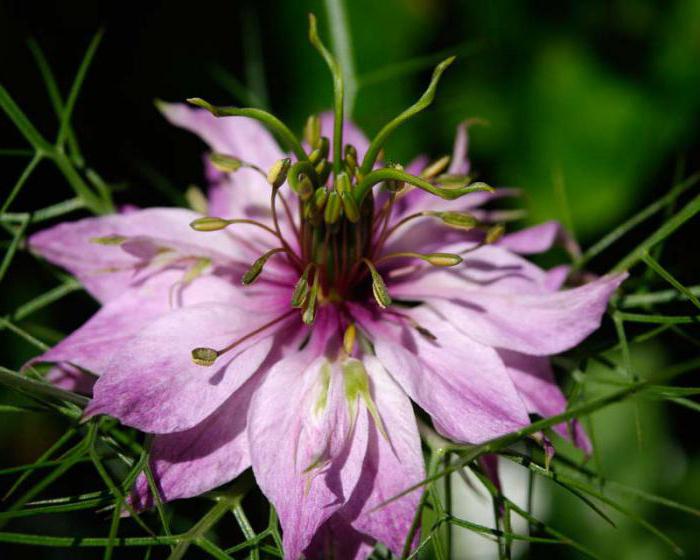

The flower Nigella damascus, the photo that can be seen in the article, is an unpretentious plant that is distinguished by good flowering. Its seeds can be used in cooking, as well as for the treatment of many diseases. Observing the simple rules for the care and maintenance of nigella, you will ensure that it will delight you for many years.
Care
To provide a culture with proper care, it is important to properly care for it. For this, a number of recommendations are followed.
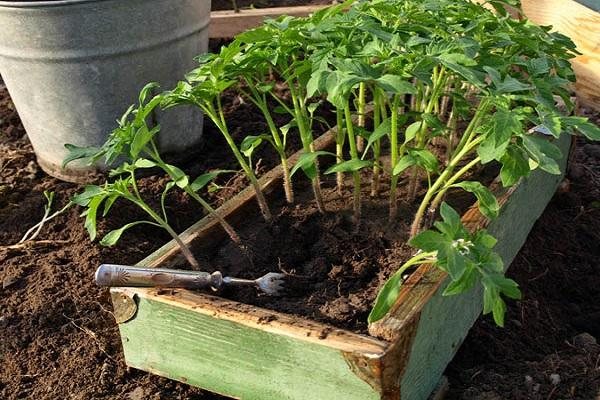

Watering
It is worth watering the crop in moderation, but regularly. She hardly accepts excessive soil moisture. If you do not water the nigella for a long time or use too much water, there is a risk of plant death.
Loosening and weeding
This plant is considered to be very moody. It is recommended to constantly weed and loosen it. In this case, weeding should be done carefully so as not to provoke root damage. It is important to loosen the soil after watering to provide oxygen to the roots.
Top dressing
It is not recommended to feed Nigella with fresh organic fertilizers or use a lot of nitrogenous substances. This greatly delays the growing season. As a result, it will not be possible to collect ripe seeds. During the flowering period, it is worth bringing phosphorus-potassium preparations under the nigella.
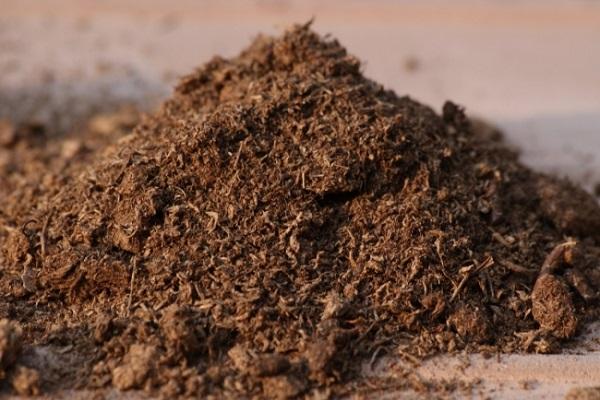

Care during growth
Nigella is distinguished by a rather unpretentious disposition, so leaving does not cause any particular inconvenience to the summer resident. To form a lush deciduous mass, the plant needs complete freedom from weeds. To sufficiently saturate the root system with oxygen, the soil at the site of nigella growth is regularly loosened. When signs of excessive thickening of the shoots appear, the plant is thinned out.
It does not tolerate both excessive moisture and overdrying of the soil, therefore watering is carried out as the fertile layer dries out.
Top dressing is carried out during the growing season with potassium-phosphorus fertilizers.
If nigella is sown on an area where organic and mineral fertilizers were periodically applied during the previous season, there is no need for feeding.
The choice of planting material
Among all the variety of varieties that exist today, the most suitable for growing in the conditions of the Moscow region are the following:
- Damascus nigella. A variety grown for spicy material. Medium-sized, reaching 40 cm in height. It is quite cold-resistant, resistant to temperature extremes. The flowers are small, voluminous, with a double border. The flowering phase ends with the formation of a capsule filled with seeds.
- Cambridge Blue. Tall variety, reaching a meter. Differs in lacy foliage and large sepals of blue and gray shades. Highly ornamental variety with no outstanding spicy seed quality.
- Dwarf Moody Blue. A low-growing variety, planted as borders and for decoration of the border of alpine slides. The height of the stems is 20 cm. Peduncles are small, but very numerous, mainly of blue shades.
- Seed nigella. A variety grown for the abundant collection of seeds used for the preparation of perfume oil and for use as a spice. Outwardly similar to narcissus flowers, white lobe-shaped petals and large yellow stamens.
Top dressing
The nigella flower (Albina, whose photo can be seen in the article, and other varieties) needs regular weeding and loosening of the soil, which is done very carefully,since these plants practically do not tolerate damage to the root system.
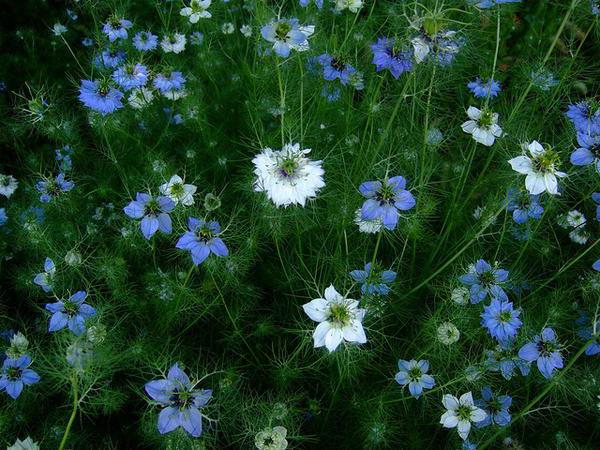

In addition, Nigella does not tolerate mulching. It is recommended to apply top dressing only once, at the beginning of flowering. Complex mineral fertilizers are suitable. The flower does not tolerate fresh organic and nitrogen fertilizing.
Growing a plant using seeds
Nigella can be raised by yourself. For this, mature seeds are used. In order to get the desired result, it is worth using some of the recommendations of experienced gardeners.
Sowing seeds
Reproduction of this plant is possible only with the help of seeds. In open soil, seeds are sown only in May or closer to the winter period, in which case the seed material must be deepened into the soil by 20 mm. The first shoots are hardy enough to low temperatures, but despite this, gardeners advise protecting the plant with shelter. It is categorically undesirable to transplant seedlings, the plant does not like such manipulations. That is why they sow seeds immediately on the place where the nigella is planned to be grown.
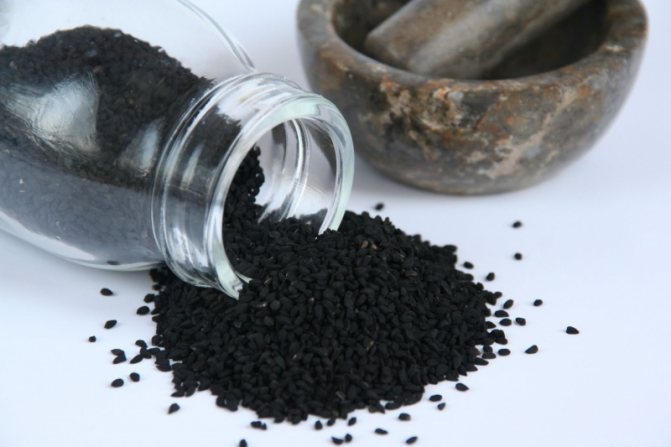

Growing seedlings
If there is a need to grow seedlings, then the seeds should be sown in March or early April. Disembarkation is carried out in a greenhouse. They are buried in the ground by 20 mm. When the first leaves appear on the plant, the seedlings must be dived into individual containers. The planting of seedlings will subsequently be carried out immediately in these pots: only peat containers are required without fail.
Gardeners reviews
Alexandrovna, Krasnodar
My Nigella Damascus has been sown by self-sowing for several years now, and it sprouts like a weed in the fall, it does not freeze in our climate.
Rudova Elena, Moscow
I planted nigella in the sun, in a fertile land. This time it grew much larger and bloomed for a long time. She even gave self-seeding.

